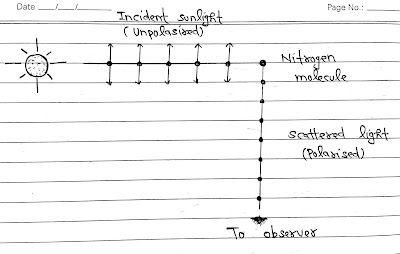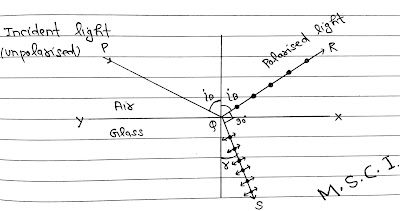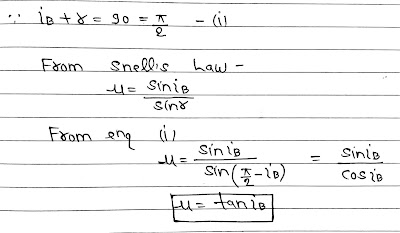Chapter-10|Wave Optics|NCERT 12th Physics:
Polarisation of Light by Scattering:
From below figure the dots shows vibrations perpendicular to the plane of paper and double arrows show vibrations in the plane of paper. The electrons in the molecules begin to vibrate in both of these directions. The electrons vibrating parallel to the double arrows cannot send energy towards an observer looking at 90⁰ to the direction of the sun because their acceleration has no transverse component. The light is scattered by the molecules in this direction has only dots. It is polarised perpendicular to the plane of paper.
This explains the polarisation of light scattered from the sky.
Polarisation of Light by Reflection:
In 1808, the French Physicist Malus discovered that when ordinary light is incident on the surface of a transparent medium, the reflected light is partially plane polarised. The extent of polarisation depends on the angle of incident for a particular angle of incidence. The reflected light is found to be completely polarised with its vibrations perpendicular to the plane of incidence.
Thus, when reflected wave is perpendicular to the refracted wave, the reflected wave is a totally polarised wave.
The angle of incidence in this case is called Brewster’s angle IB.
The above relation is known as Brewster law. The law state that the tangent of polarising angle of incidence of a transparent medium is equal to its refractive index.
The value of brewster’s angle depends on the transparent refractive medium and the wavelength of the light used.



